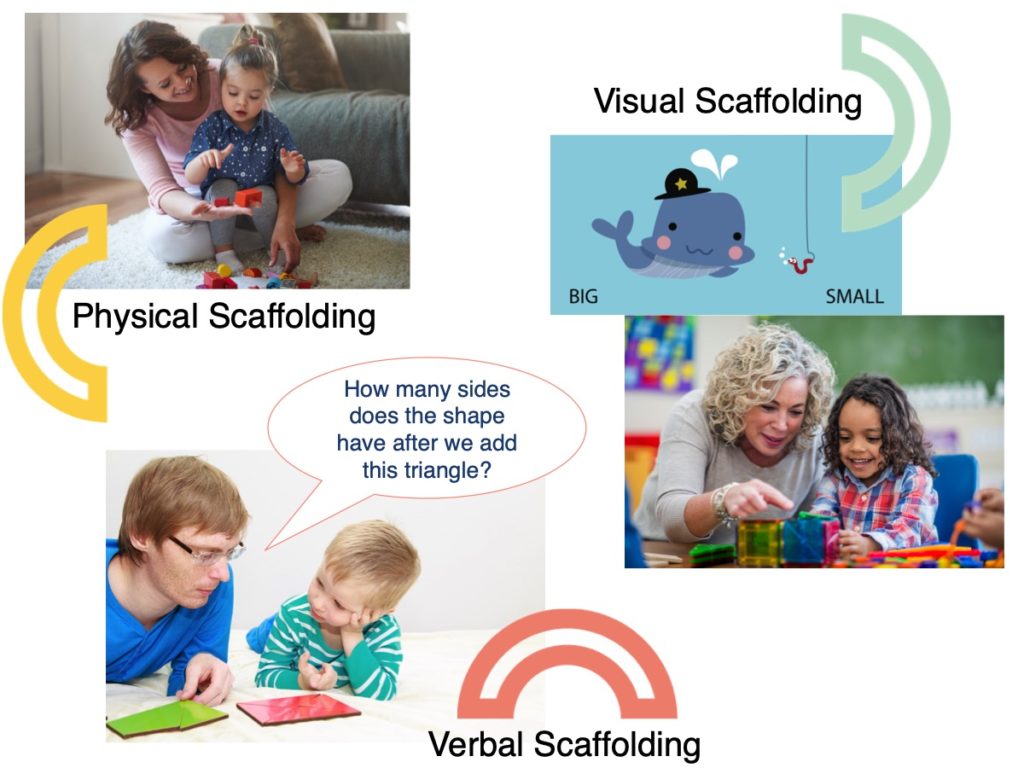
Scaffolding is offering the right level of support to help a child achieve more than she would be able to on her own. Scaffolding helps take a child’s knowledge to the next level. It can be physical, visual, or verbal.
You can provide physical scaffolding, such as using concrete objects to show addition, such as one plus one equals two. Visual scaffolding includes pairing images with labels, charts, and pointing. For example, point to each block as a preschooler counts them. Representational gestures, like stretching your arms out wide to show “big,” are also a form of visual scaffolding. Scaffolding can also be verbal, such as asking, “How many sides does the shape have after we add this triangle?” Or, “How many more cups will you need to fill the bucket?” Adults can use verbal cues to teach math concepts and improve numeracy skills.
How can we encourage early numeracy in the activities that are already part of a child’s day? Next we’ll discuss number and operations. Number concepts are all around us, ready for you to include in children’s play and daily activities.
-
- Cardinality
- is the concept that, when counting objects, the last number represents the total number of objects in the set
- Measurement
- includes size, length, height, weight, volume, distance, and time
- Number and operations
- refers to a set of math concepts related to understanding and representing numbers and operations (e.g., addition, subtraction, multiplication, and division) and the relationships between them
- Numeracy
- is the ability to understand and reason with numbers
- One-to-one correspondence
- refers to matching one object to each number word when counting
- Subitizing
- refers to the ability to identify the number of objects in a small group of objects without counting them
- Scaffolding
- is offering the right level of support to help a child achieve more than they would be able to on their own